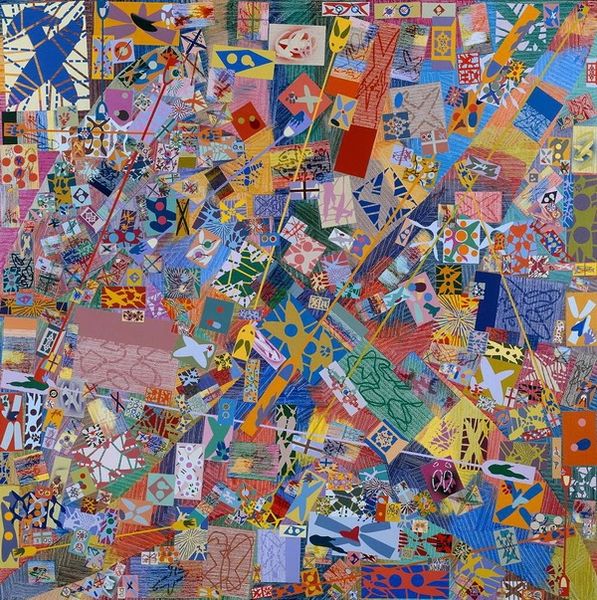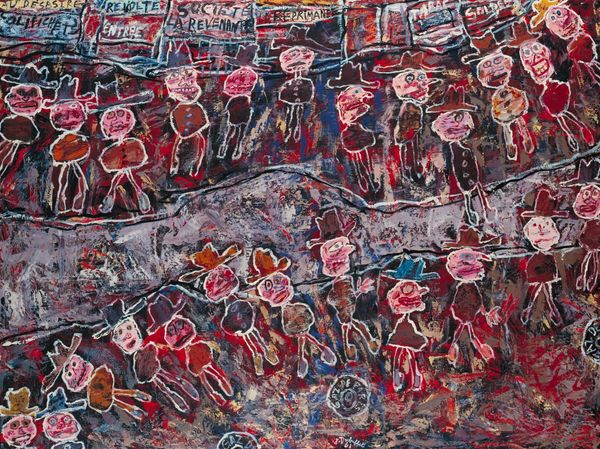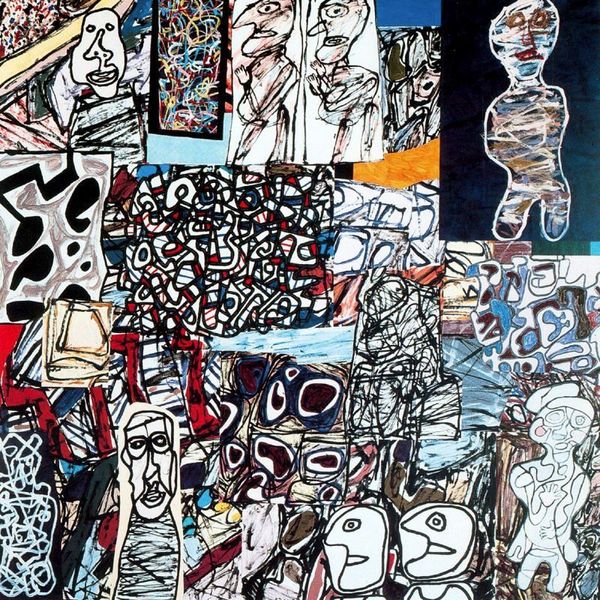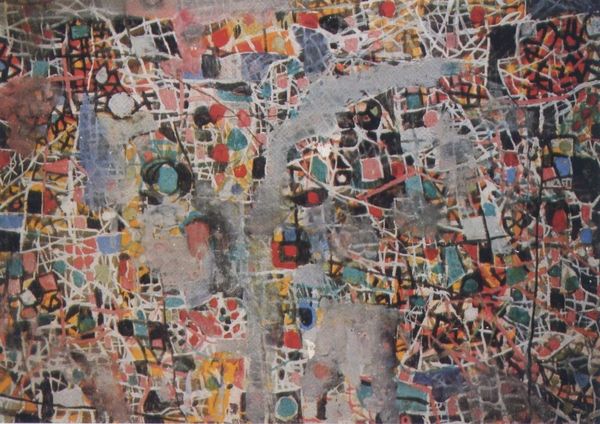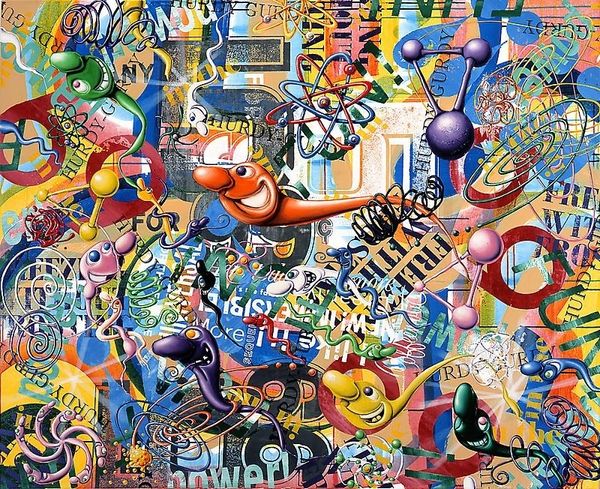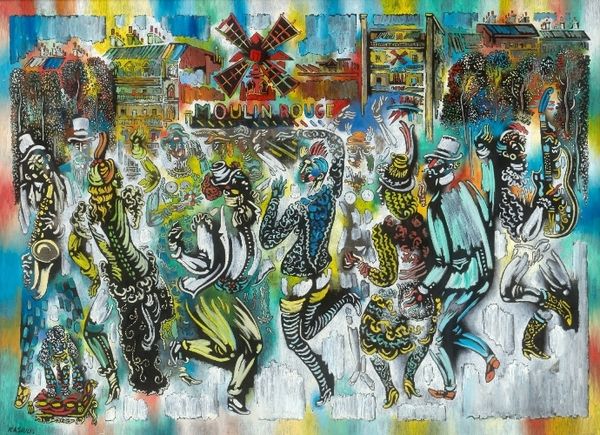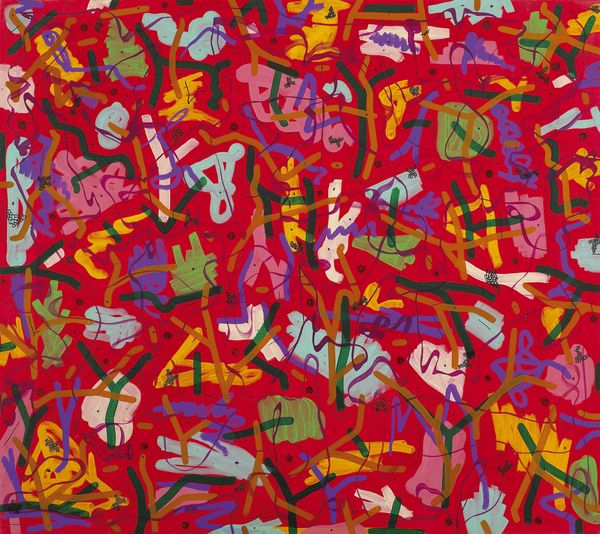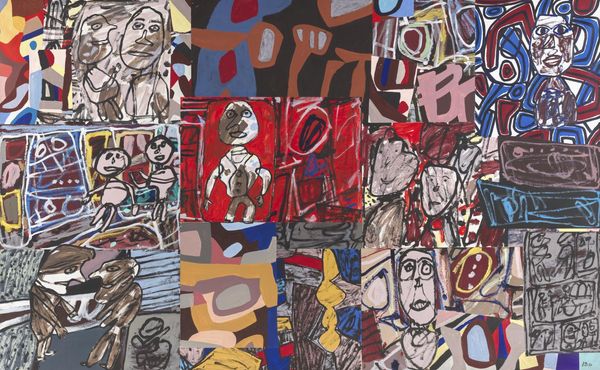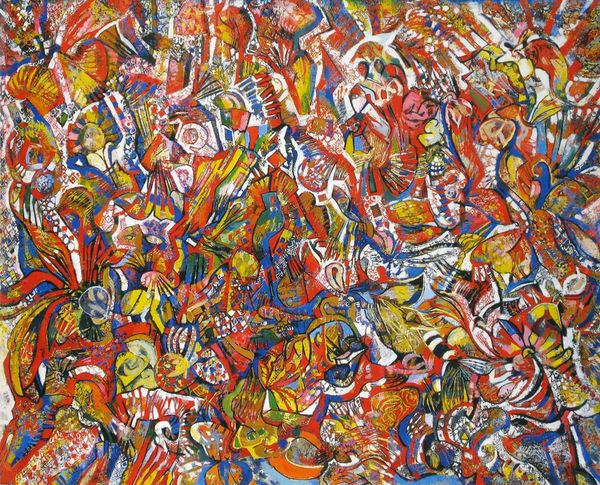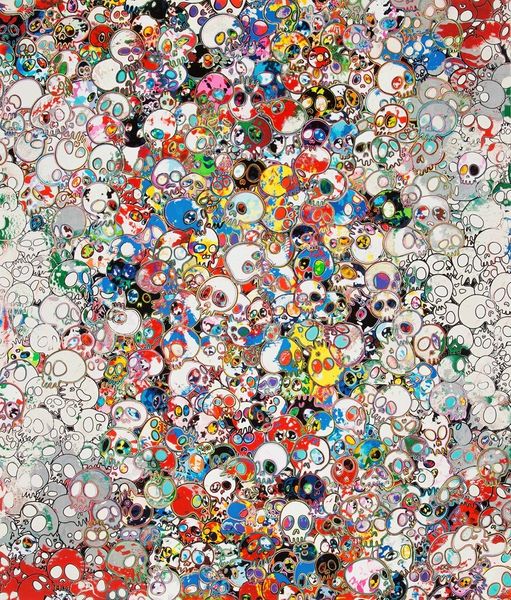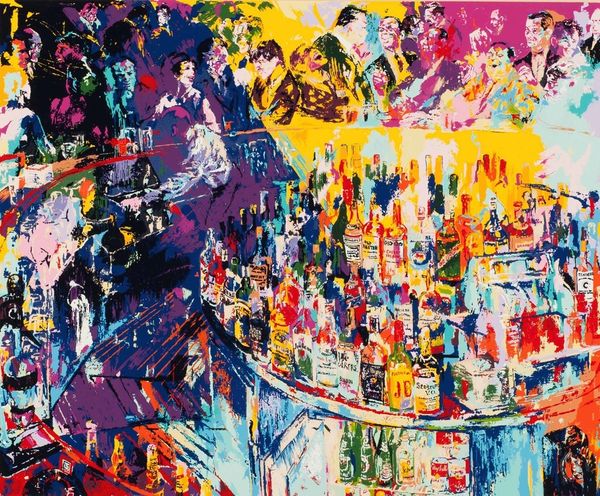
mixed-media, collage, assemblage, painting
#
mixed-media
#
collage
#
narrative-art
#
assemblage
#
painting
#
graffiti art
#
appropriation
#
kitsch
#
figuration
#
neo expressionist
#
acrylic on canvas
#
street graffiti
#
pop-art
#
painting art
#
decorative-art
Copyright: Erro,Fair Use
Curator: Icelandic artist Erró created this overwhelming, large-scale, mixed media collage painting called "Baby Rockefeller" in 1963. What strikes you immediately? Editor: My first thought is “visual overload.” It’s so densely packed with imagery; there’s barely any background showing. It’s almost aggressively… cheerful? I can't process it as a single unit at all. Curator: It is an interesting juxtaposition. The cheerfulness you describe speaks to its engagement with kitsch and pop art aesthetics, a fascination with popular culture and consumer imagery that characterized the era. Look closely; we see cut-outs from advertisements, comics, and various forms of mass media all fighting for attention. Editor: Absolutely. Knowing it’s a mixed-media assemblage does give me a clue about Erró’s process. This isn't something meticulously painted stroke by stroke; instead, it’s an additive process, building layers from found materials and mass produced images. I imagine him, not just as an artist, but as a scavenger and editor of capitalist detritus. Curator: A critical reading suggests that Erró uses these appropriated images to explore deeper cultural meanings. "Baby Rockefeller," as a title, hints at themes of capitalism, power, and perhaps the infantilization of society through consumerism. Consider how the individual images relate to overarching narratives. The Native American imagery seems particularly pointed considering Rockefeller family wealth. Editor: Good point. So it’s not just an aesthetic exercise. Erró is actually engaging with very specific issues. Still, it feels lighter in tone compared to, say, some of the more politically charged Pop Art coming out of the US at the time. It's still fascinating to think of Erró sourcing all these fragments, reflecting production and cultural memory within a capitalist system. Curator: Indeed. The piece is complex, a bit manic, yet invites endless interpretation. It seems Erró is highlighting that very aspect of mass media: we must pick and choose what to interpret for ourselves. Editor: A layered material process creating layers of potential meanings. It seems rather fitting, given Erró's interests and approaches. Thanks, that definitely added depth to my understanding!
Comments
No comments
Be the first to comment and join the conversation on the ultimate creative platform.

